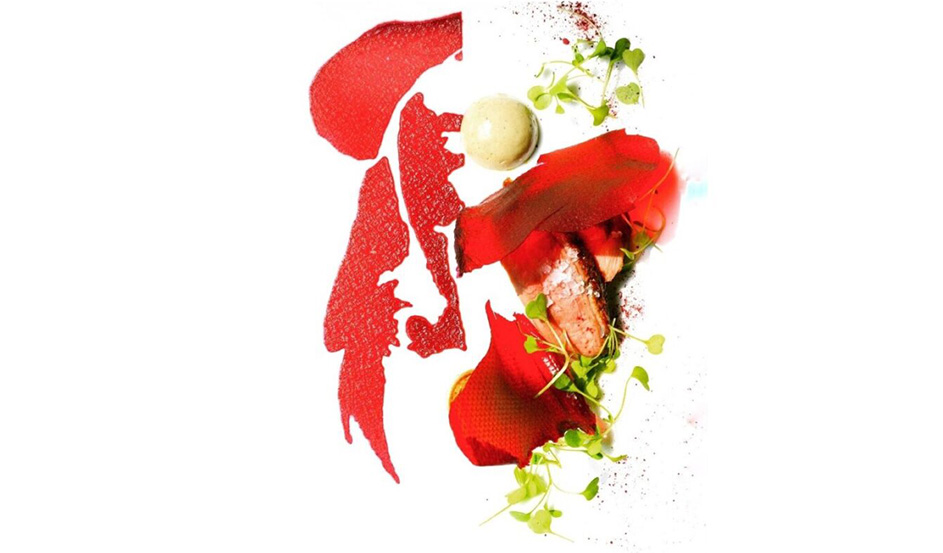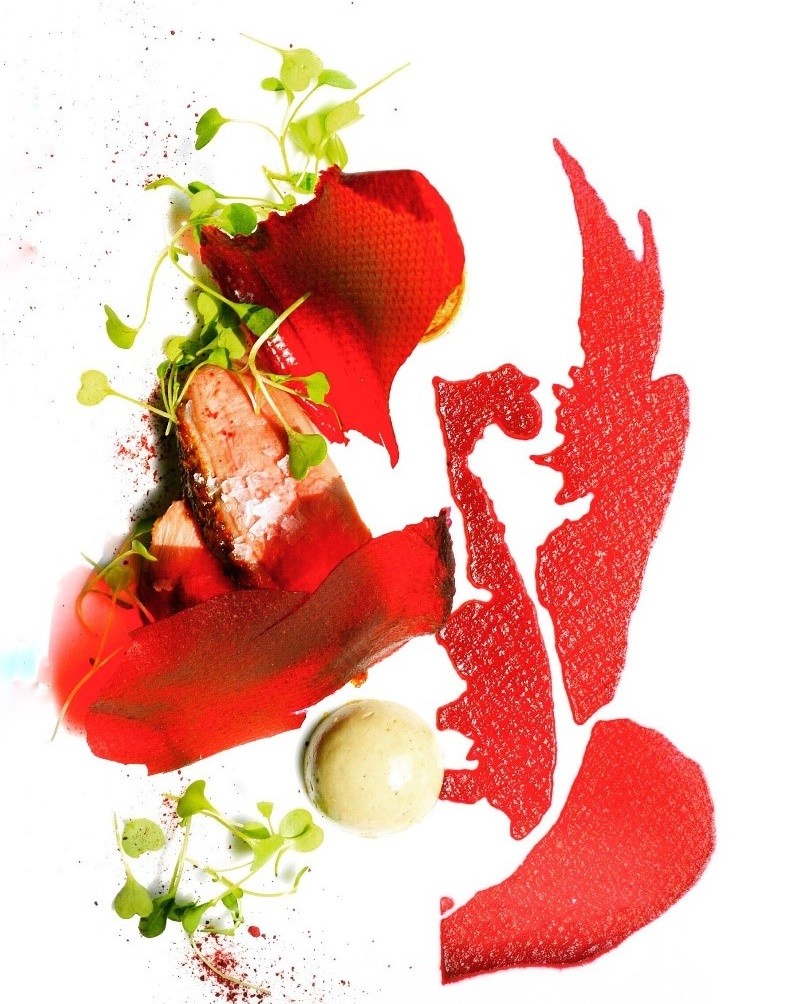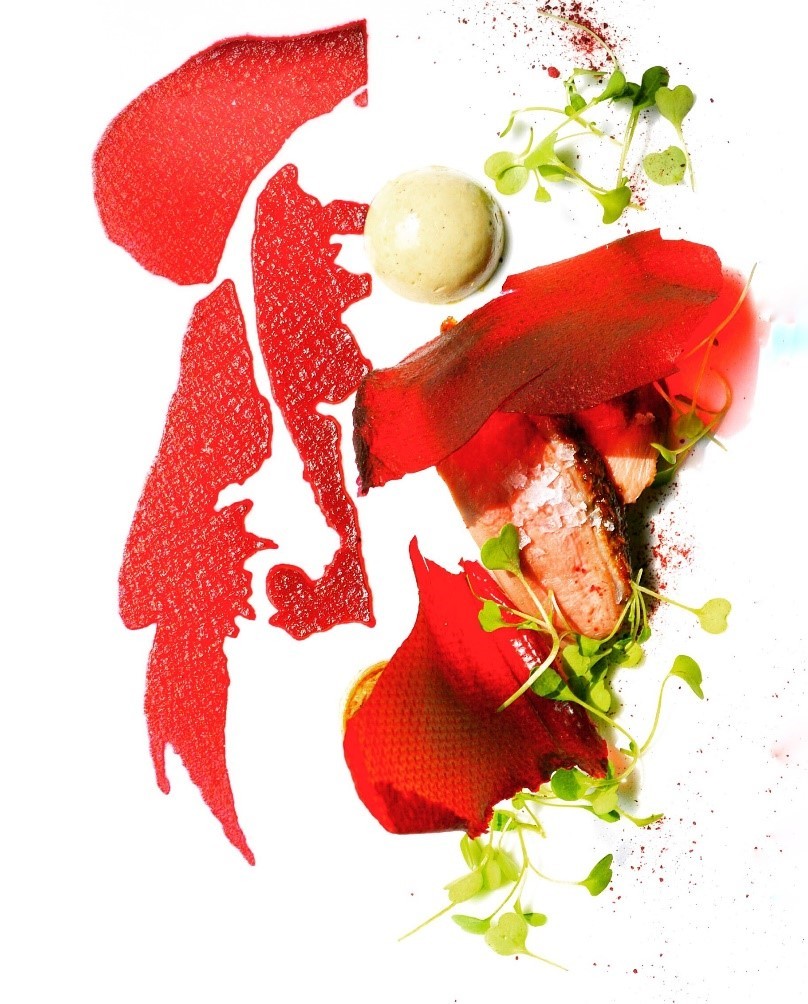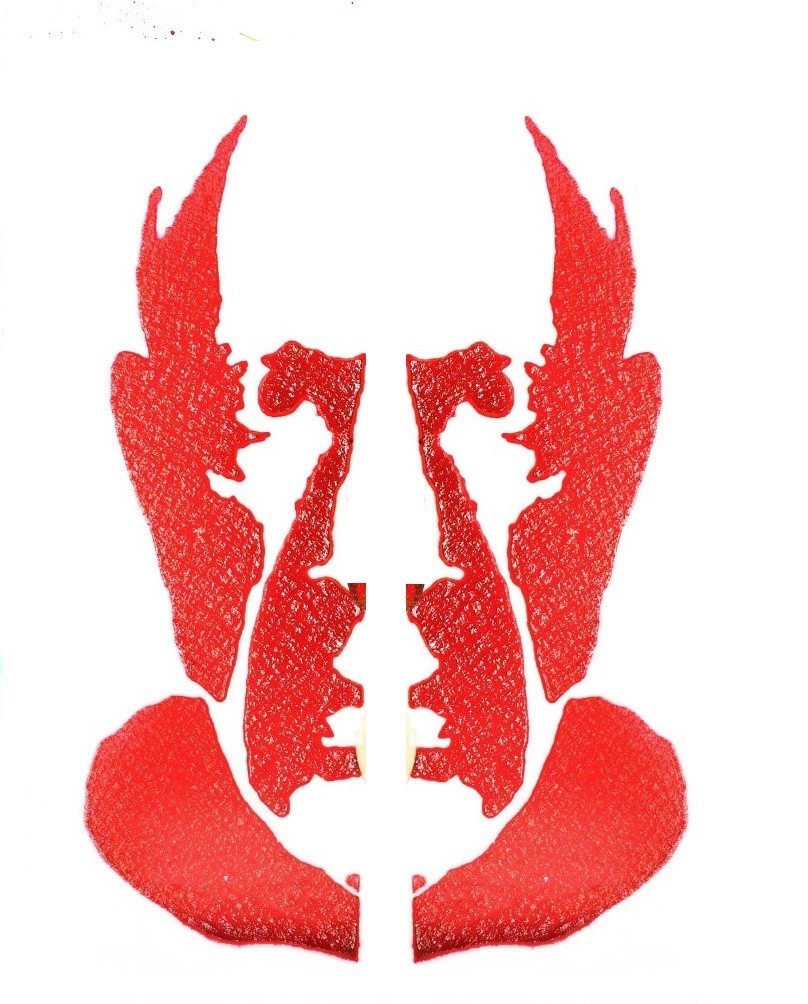
“EVERY ACT OF CREATION BEGINS WITH AN ACT OF DESTRUCTION” PABLO PICASSO.
Picasso’s words were meant in the context of artistic creativity, he believed that for one to be truly creative they must destroy their old knowledge and build on a new plane. As a chef that sentiment also felt like it fit into the context of culinary creativity; when a chef wants to present their guests with a delicious plate of food they must first prepare the ingredients, and this process in some manner ‘destroys’ the life and natural form of the ingredients used.
In the case of this dish we took two beautiful ingredients beetroot and duck, now our hunch was that if we marched a live duck into the dining room and handed guests a raw beetroot, that would not be a satiating dish. So we ‘destroyed’ the ingredients;
- We used every part of our duck; sous vide breast, confit leg, liver parfait, bones and gizzards in the sauce.
- The beetroot was cooked sous vide over 3 hours and pureed, as well as dehydrated into a powder, and a beetroot paper was made using isomalt.
Presenting the dish
For the service, we present the dish by first giving a brief explanation of the above, the hostess then apologises to the guests as there is a delay in the kitchen “because the ducks are temperamental and the chefs are quite literally trying to catch them…” as she leaves the table the sound of ducks quacking begins over the loud speakers, this usually provokes laughter. The sound of the ducks becomes a little more agitated and it crescendos in the thud of the cleaver coming down! Now there is surprise (did they just play that??) and the dish is served.
Thought Provoking
We play (what we call) ‘the duck theatre’ for a few of reasons; first, we want our guests to laugh, surely it is important to have laughter during a meal and as chefs focused on delivering experiences and emotional stimulus, laughter is very important. Second; why do we play the slaughter at the end? More and more chefs talk about the source of their products all the time, some talk about where their products come from, how they are raised and the name of the farm, we have chosen to highlight a different aspect of the process which the ingredient has gone through to get to the diner’s plate. We want our diners to be mindful of where their ingredients are coming from, we want them to value the ingredient and the life that has been taken for their enjoyment, surely that makes it more worthy of their attention.
Perspective
Once the dish is served the guests are asked if they “can see the face in the dish”, most diners are slightly baffled by this (fig 1), so we ask them to look at the plate of the diner sitting opposite them on the table (so technically they are looking at the dish upside down, see fig 2). Suddenly there are gasps of “ah!” that spread down the table as guests begin to see the image which emerges from the dish. This aspect of emergence in the dish inspired an academic paper entitled; Constructing flavour perception: from destruction to creation and back again, C. Spence, J. Youssef, 2016, Flavour).
And whose face is it that emerges? Why none other than Mr. Picasso himself.
Why do we serve it upside down then ask guests to look at each other’s dish? Here in lies the lesson; gastronomy like art is all a matter of perspective.





